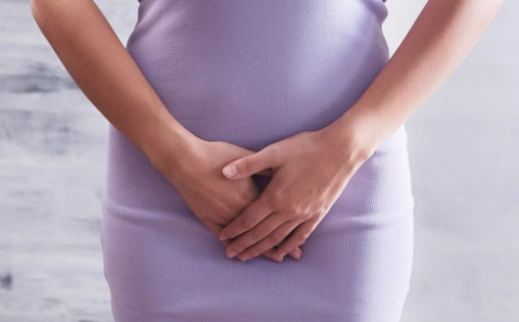
For many women, the parenthood journey can be exciting and challenging. When faced with conditions like chocolate cysts, also known as endometriomas, the path to conception may become even more complex. In this article, we will explore the impact of chocolate cysts on fertility and discuss potential strategies for women who aspire to build a family despite this condition.
Chocolate cysts, also known as endometriomas, are a specific type of cyst that can develop in the ovaries. These cysts are associated with a medical condition called endometriosis. To understand chocolate cysts, it's important to first understand endometriosis.
Endometriosis is a chronic medical condition in which tissue similar to the lining of the uterus (endometrium) starts to grow outside the uterus causing pain and infertility. This tissue can implant and grow on various reproductive organs and pelvic structures:
The lining of the pelvic cavity, known as the peritoneum, can become inflamed and irritated due to endometriosis. This can lead to the formation of adhesions, and bands of scar tissue that may cause organs to stick together or to the abdominal wall.
Bladder: Endometriosis can affect the bladder, causing urinary symptoms such as pain during urination and frequent urination.
Rectum and the bowels: The presence of endometrial tissue in the rectum or bowels can result in symptoms like constipation, diarrhea, pain during bowel movements, and rectal bleeding.
Abdominal wall: Rarely, endometrial tissue can implant and grow on the abdominal wall, causing localized pain.
Lungs: In extremely rare cases, endometrial tissue may even travel to the lungs, causing symptoms like chest pain and difficulty breathing.
Endometriosis is a common gynecological disease that affects 10-15% of women of reproductive age. While it can impact fertility, it does not usually prevent pregnancy. It affects a significant percentage of women of reproductive age and is more common in those who have trouble getting pregnant.
The symptoms can vary and may include pain during menstruation and intercourse. While it is not fully understood how endometriosis causes infertility, it is believed to involve inflammatory processes and anatomical disruptions. Treatment options for infertility caused by endometriosis include surgery, ovulation induction, and IVF. Early diagnosis and appropriate management can help women with endometriosis conceive and become parents.
One of the significant concerns with chocolate cysts is their potential impact on fertility. These cysts can disrupt the normal functioning of the ovaries, leading to the release of fewer healthy eggs during ovulation. Additionally, the inflammatory environment created by endometriosis and chocolate cysts can affect egg quality and the ability of sperm to fertilize eggs. This can make it more challenging for women with these cysts to conceive.
The relationship between chocolate cysts and fertility can be complex. Several factors contribute to their impact on a woman's ability to conceive:
The primary goals of treating chocolate cysts are to alleviate pain and discomfort, improve overall quality of life, and address any fertility concerns. Treatment options for chocolate cysts and endometriosis can include medication to manage symptoms, such as pain and heavy bleeding, as well as surgical procedures to remove the cysts and any endometriotic tissue. The choice of treatment often depends on the woman's age, the size and location of the cysts, and her desire for future fertility.
Pain Medication: Over-the-counter pain relievers like ibuprofen can help manage mild to moderate pain associated with chocolate cysts.
Hormonal Therapy: Hormonal medications such as birth control pills, hormonal intrauterine devices (IUDs),or GnRH agonists can be prescribed to suppress the menstrual cycle and reduce the growth of endometrial tissue. This can help alleviate pain and slow the progression of cysts.
Laparoscopic keyhole surgery: This minimally invasive surgical procedure is often used for diagnosing and treating chocolate cysts. During laparoscopy, the surgeon can remove cysts and any endometriotic tissue, improving symptoms and potentially preserving
Ovarian cystectomy: In cases where fertility preservation is a priority, an ovarian cystectomy may be performed. This procedure involves the removal of the cyst while preserving the healthy ovarian tissue.
Oophorectomy: In rare cases where the cyst is large, causing severe pain, or poses a significant risk to ovarian health, the affected ovary may need to be removed. This procedure called oophorectomy.
If you have chocolate cysts and are concerned about fertility, it's essential to discuss your options with a healthcare provider, preferably a gynecologist or fertility specialist. Here are some potential strategies.
Assisted reproductive techniques (ART) like in vitro fertilization (IVF) can help bypass some of the obstacles posed by chocolate cysts. IVF involves the retrieval of eggs from the ovaries, which can then be fertilized with sperm in a controlled environment before being transferred to the uterus.
Chocolate cysts can be challenging to live with, but there are effective treatment options available. If you suspect you have chocolate cysts or are experiencing symptoms such as pelvic pain or fertility issues, it's crucial to consult with your doctor. Early diagnosis and a personalized treatment plan can make a significant difference in your comfort, quality of life, and reproductive health.
Remember, the best approach to managing chocolate cysts depends on your unique circumstances and goals, so open communication with your doctor is key to finding the right treatment path for you.